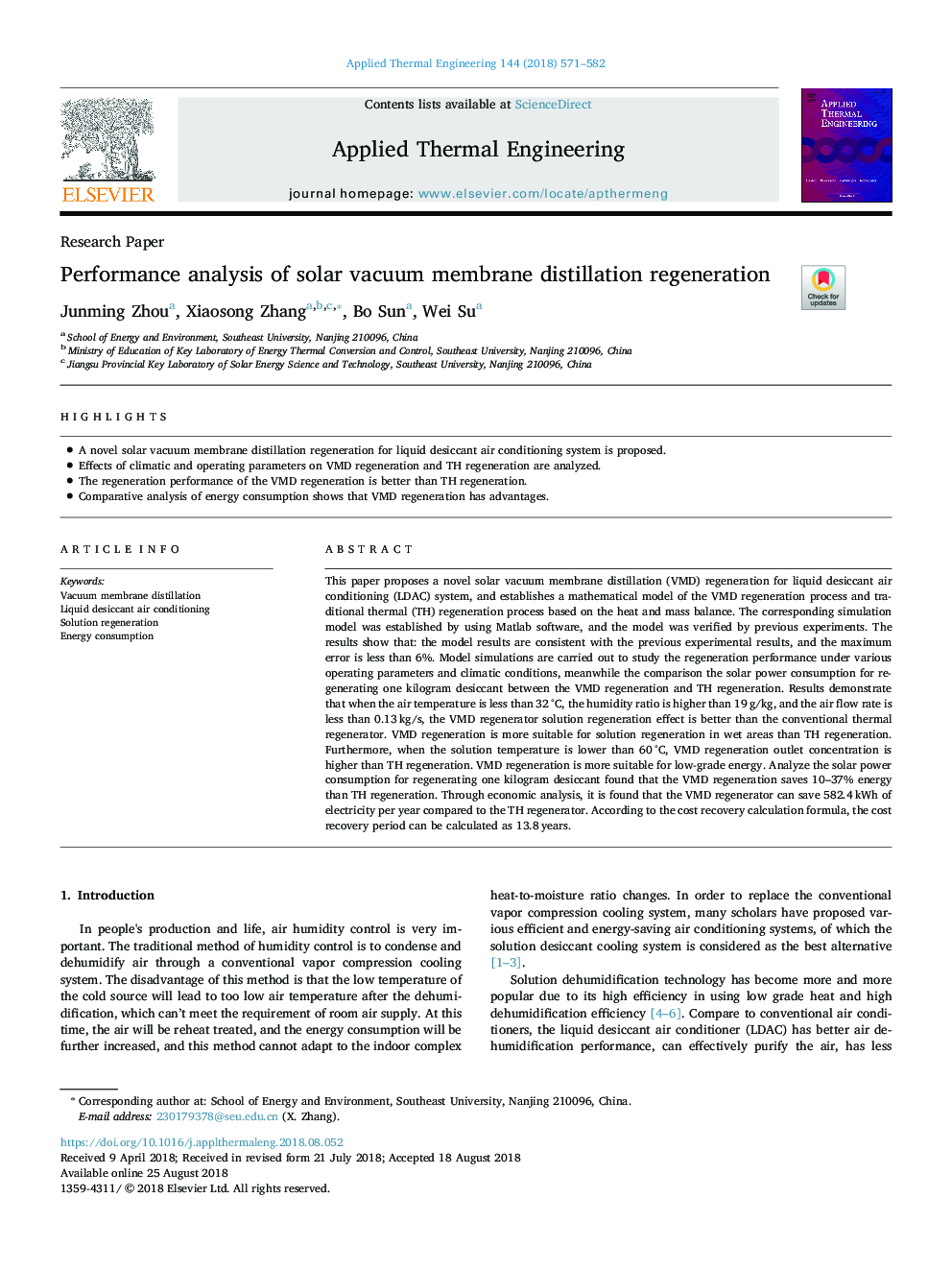| کد مقاله | کد نشریه | سال انتشار | مقاله انگلیسی | نسخه تمام متن |
|---|---|---|---|---|
| 10127295 | 1645050 | 2018 | 12 صفحه PDF | دانلود رایگان |
عنوان انگلیسی مقاله ISI
Performance analysis of solar vacuum membrane distillation regeneration
ترجمه فارسی عنوان
تجزیه و تحلیل عملکرد بازسازی تقطیر غشای خورشیدی خلاء
دانلود مقاله + سفارش ترجمه
دانلود مقاله ISI انگلیسی
رایگان برای ایرانیان
کلمات کلیدی
تقطیر غشای خلاء، تهویه مطبوع مایع خشک کن بازسازی محلول، مصرف انرژی،
موضوعات مرتبط
مهندسی و علوم پایه
مهندسی شیمی
جریان سیال و فرایندهای انتقال
چکیده انگلیسی
This paper proposes a novel solar vacuum membrane distillation (VMD) regeneration for liquid desiccant air conditioning (LDAC) system, and establishes a mathematical model of the VMD regeneration process and traditional thermal (TH) regeneration process based on the heat and mass balance. The corresponding simulation model was established by using Matlab software, and the model was verified by previous experiments. The results show that: the model results are consistent with the previous experimental results, and the maximum error is less than 6%. Model simulations are carried out to study the regeneration performance under various operating parameters and climatic conditions, meanwhile the comparison the solar power consumption for regenerating one kilogram desiccant between the VMD regeneration and TH regeneration. Results demonstrate that when the air temperature is less than 32â¯Â°C, the humidity ratio is higher than 19â¯g/kg, and the air flow rate is less than 0.13â¯kg/s, the VMD regenerator solution regeneration effect is better than the conventional thermal regenerator. VMD regeneration is more suitable for solution regeneration in wet areas than TH regeneration. Furthermore, when the solution temperature is lower than 60â¯Â°C, VMD regeneration outlet concentration is higher than TH regeneration. VMD regeneration is more suitable for low-grade energy. Analyze the solar power consumption for regenerating one kilogram desiccant found that the VMD regeneration saves 10-37% energy than TH regeneration. Through economic analysis, it is found that the VMD regenerator can save 582.4â¯kWh of electricity per year compared to the TH regenerator. According to the cost recovery calculation formula, the cost recovery period can be calculated as 13.8â¯years.
ناشر
Database: Elsevier - ScienceDirect (ساینس دایرکت)
Journal: Applied Thermal Engineering - Volume 144, 5 November 2018, Pages 571-582
Journal: Applied Thermal Engineering - Volume 144, 5 November 2018, Pages 571-582
نویسندگان
Junming Zhou, Xiaosong Zhang, Bo Sun, Wei Su,
